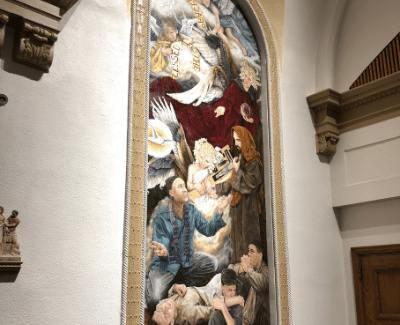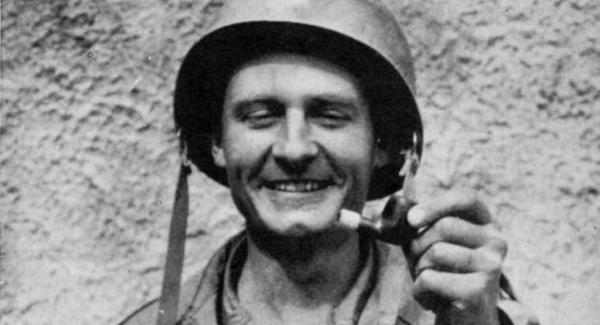The remains of Father Emil Kapaun, who was ordained into priesthood in 1940 in St. John’s Chapel at what is now Newman University, were recently identified by a United States government forensic team.
Kapaun died in a North Korean prisoner of war camp in 1951 and was buried in a shallow grave there. He was 35.
Unbeknownst to his family, Kapaun’s remains, along with other unidentified soldiers, were returned to the United States shortly after the end of the Korean War, where they were buried at the National Cemetery of the Pacific in Hawaii.
The Defense POW/MIA Accounting Agency, part of the U.S. Department of Defense, maintains a laboratory near the cemetery and helps to identify military personnel who are listed as prisoners of war or missing in action.
Kapuan was identified using dental records and DNA from his brother, and his family is currently coordinating burial arrangements.
Born in 1916 in Pilsen, Kansas, a small farming community in Marion County, Kapaun served as an Army chaplain in World War II before returning to Kansas to serve as a priest in the Diocese of Wichita. When the Korean War broke out, he enlisted again and was among the first troops to land overseas. In 1950, he was taken as a prisoner of war.
Kapaun was recognized with the Distinguished Service Cross, the Army’s second-highest military decoration, for risking his life on the battlefield to minister to troops on the frontlines.
In 2013, he was also awarded the Medal of Honor, the highest military award, for his actions at the Battle of Unsan in November 1950. When American forces pulled back, Kapaun stayed behind with the wounded soldiers. His medal citation reads, “Chaplain Kapaun calmly walked through withering enemy fire in order to provide comfort and medical aid to his comrades and rescue friendly wounded from no-man’s land.”
In 1993, Kapaun was named a Servant of God by the Vatican for his actions in the POW camp, where he stole food to help fellow prisoners, provided spiritual comfort and tended to the sick.
Being named a Servant of God signified that his cause for sainthood — a long process — could begin. He would become just the fourth American-born saint if he is canonized.

A 12-foot by 4.5-foot mural honoring Kapaun adorns Newman University’s St. John’s Chapel. The painting was done by artist Wendy Lewis.
In his homily at a 2009 Mass celebrating the unveiling of the artwork, Father John Hotze, the episcopal delegate for Kapaun’s cause, shared the following reflection:
“Father Emil Kapaun left this chapel a changed man, leaving this chapel a priest, ordained to serve the Universal Church in the Diocese of Wichita. Father Kapaun continued to answer this call to faith. This call of faith was to take him to the corners of the earth. This call would eventually lead him to lay down his life for his friends. Father Kapaun, building the Universal Church that he was called to serve.”
For Father Adam Grelinger, chaplain at Newman University, the connection to Kapaun is personal.
“No doubt Father Kapaun has played an important role in my own priesthood as I was constantly reminded of his courageous example at Kapaun Mt. Carmel High School, and I really heard the call to the seminary in the chapel at Newman University in which Father Kapaun was ordained a priest,” he said. “He exemplifies the best of the priesthood in his sacrificial service to those most in need and truly being the light of Christ in the darkest of places. I pray that his example continues to rub off on me as I currently have the privilege to pray and offer Mass every day in Newman’s chapel.”
Marie O’Neal, a senior double majoring in math and international studies, echoed Grelinger’s sentiments.
“It’s incredible to remember that I go to daily Mass in the same chapel where Father Kapaun was ordained,” she said. “I am excited to see how his canonization case progresses, and I pray his story inspires others in their journey toward sainthood.”

